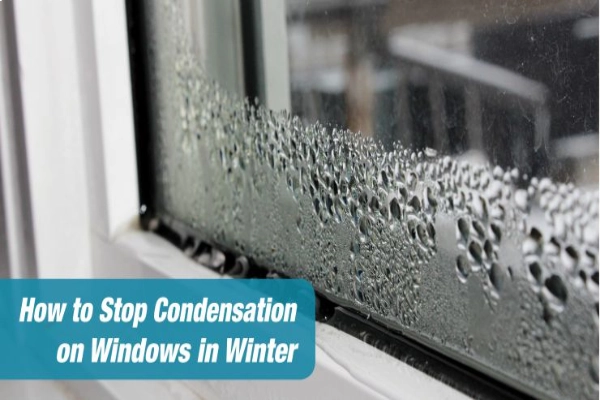
Interior window condensation isn’t just a nuisance; it can be a sign of heat loss. Follow Window Genie’s recommendations for how to stop condensation on windows in your home.
While it is fairly typical to see during wintertime, interior window condensation isn’t just a common nuisance; it can be a sign of heat loss. Heat loss = high utility bills… no thank you! As a responsible homeowner, you’ll want to understand the root of the issue, whether it has potential to damage your home, and what you can do to prevent it.
Condensation is a pretty simple concept – water vapor in the air turns to liquid as soon as it comes in contact with a chilled surface: just picture a sweaty glass of cold iced-tea on a hot and humid summer day. That’s exactly what’s happening to your home’s windows when it’s warm inside and you have a cold piece of glass between you and the chilly winter air outside.
The good news is that most light condensation you see on your windows is not problematic. Common causes for a foggy window in your house are: you just took a hot shower, cooked a steamy meal, had a large number of guests over your house (body heat and hot breath), or there is a cold snap and temperatures drop drastically and suddenly outside. All of these can affect the indoor humidity that causes temporary condensation – no cause for alarm! What you DO need to be mindful of are deeper issues that cause recurring or long-lasting condensation that can lead to every homeowner’s worst nightmare… water damage. Interior window condensation not only makes it difficult to see outside, but dripping water can cause damage to the seals around your window and your window frame, or worse… cause mold and rotting to occur in your walls – yikes! If you’re experiencing condensation between two panes, you might have a broken seal. If the paint is peeling on your walls, or you notice a musty smell, this is also cause for concern and indicative of a deeper problem.
So, what can you do? Here are a few ways to stop condensation on windows in winter:
Indoor humidity can be tricky to monitor or control – you don’t want to completely eliminate humidity in your home because that’s how you end up with dry skin and a sore throat. Improving the ventilation in your home can help a LOT. The quickest, simplest thing to do is open some windows. When it’s 12 degrees outside, you probably don’t want to do that as soon as you exit the shower though, so there are a few other options…
- Always use the exhaust fan in your kitchen, bathroom and laundry room if you have it. These are meant to suck the excess moisture right from the source and expel it before it settles onto your walls, mirrors and windows.
- Run a de-humidifier while opening blinds/curtains to allow better airflow over the glass.
- Vent gas fireplaces, or try to limit how long you run them.
- Get your home an outside fresh air intake so that high-humidity interior air is not re entering your house.
- Replace single pane windows with a double pane window, or install storm windows. Storm windows themselves may collect condensation, but will protect your interior windows from getting as cold, thus reducing condensation.
We hope you find our tips helpful – check out another one of our blogs for some more ideas on how to make your home efficient!
